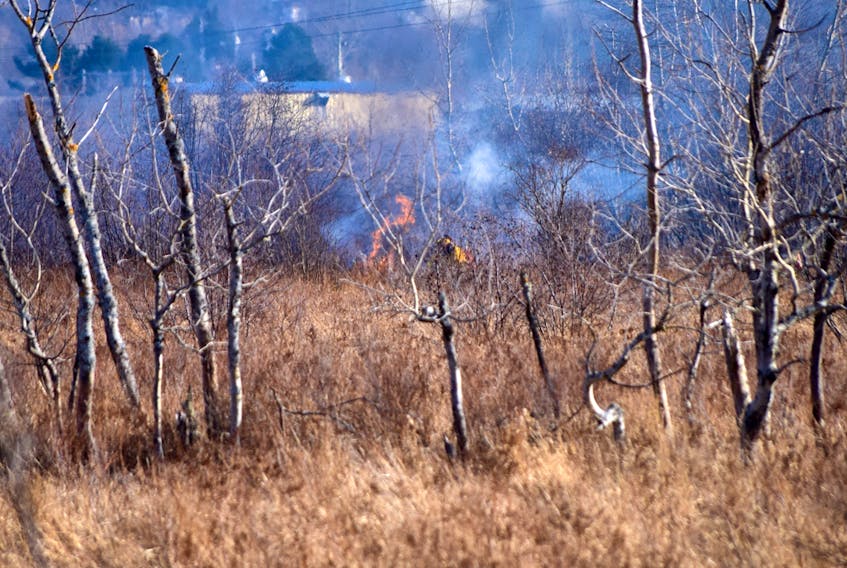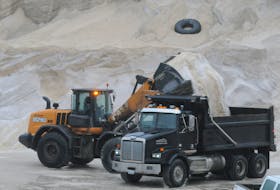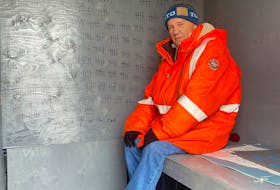While snow remains on the ground in some areas of the province, people still need to be aware that the province’s burning restrictions came into effect last week, the Natural Resources Department says.
Anyone planning to burn brush must check whether it is allowed. Go to www.novascotia.ca/Burn-Safe/
There is no open burning allowed any day between 8 a.m. and 2 p.m., something the department says not everyone is aware of.
“The biggest thing, and people don’t realize this, is that early in the morning until 2 p.m. is when we get our higher daytime temperatures. That’s when things start to ramp up,” said fire prevention officer Kara McCurdy. “If there is any kind of weather system with the wind, it’s going to be picking up in the morning hours, and that’s when we see the biggest drop in humidity.”
She said that creates perfect conditions for a forest fire.
The afternoon hours and evening hours, McCurdy said, is when temperatures and winds are going to drop and humidity rises. That means it is the better time for
burning, if conditions are right.
“It’s less dangerous for folks to burn,” she said.
A fire lit in the morning may not be fully cooled if winds do pick up later, creating the risk of blowing embers and a spreading fire.
Anyone burning brush and yard debris must make sure the fire is out before they leave and not leave it unattended, but not everyone does that, McCurdy said.
While permits are no longer needed for small domestic fires, they are for anything considered industrial burning. That’s a pile that is more than three metres wide and two metres high.
Those permits are why people may see piles of brush in farmers’ fields burning during the day. Along with permits, those piles need a site visit from Natural Resources staff to be burned.
“You’re still required to go to a Natural Resources office to get an industrial permit, which means a local technician is going to come out, inspect the site and make sure everything is fine to burn,” McCurdy said.
“When the sites are inspected, the technicians are looking at distances to the woods, what they’re burning, and there has to be equipment on site like water tanks, tools, shovels, stuff like that, and they have to supervise it 24-7.”
Even then, the property owner has to call in and ask permission to light the pile, so weather conditions can be assessed each day.
If a brush pile fire goes out of control and spreads, the person who lit it could be held liable for any damages to neighbouring property and buildings, along with the cost of extinguishing the fire.
The start date for burning restrictions only switched to March 15 from the traditional April 1 a few years ago.
“We’re finding with the extended seasons, possibly due to climate change, there’s less precipitation, increased winds, and changes to the landscape,” Mc-Curdy said. “We’re having increased fire potential with the dryer spring and later fall, so we want people to be careful during those times.”
Even though there may be patches of snow and ice, “we are more concerned with the fine fuels at this time of year, like the tall grass, accumulating leaves, and dormant trees before they green up,” she said. “The moisture content of these fuels is super-low, and that’s when things can happen.”
Most people let their guard down in the spring, she said, “but these are the types of fuels that can burn faster than most, and cause significant damage to homes.”
Winter and early spring is a better time to burn brush piles, she said, because they are surrounded by snow and wet ground.









